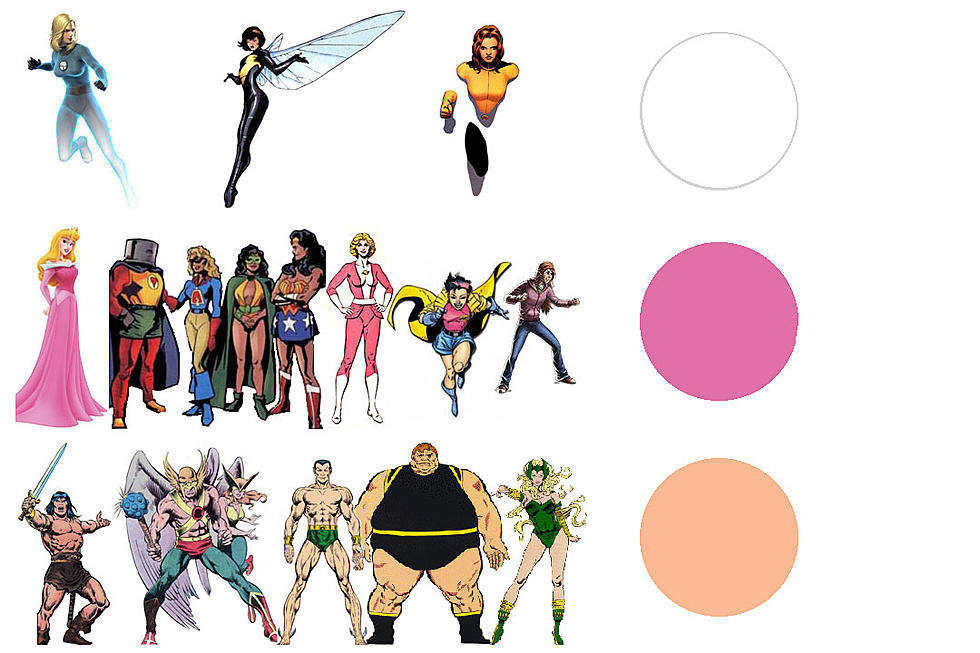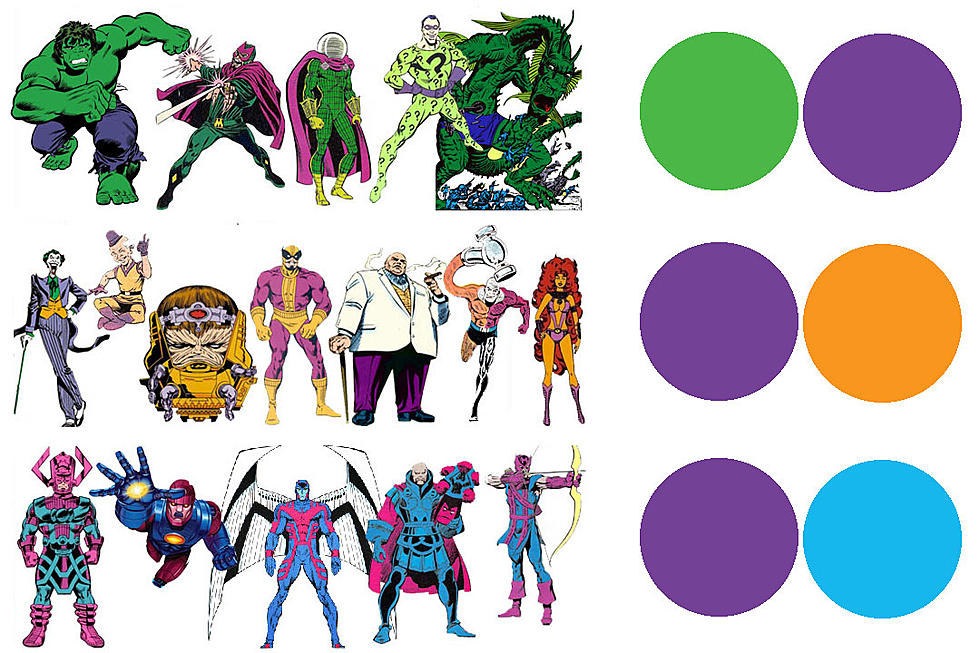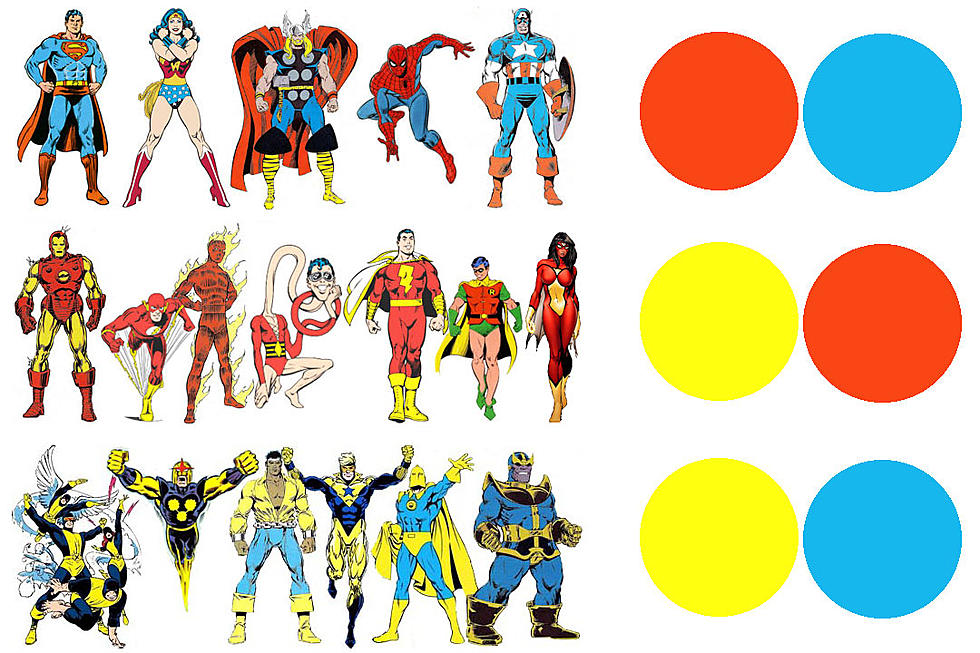
Superhero Color Theory: The Outliers
What does your favourite superheroes' colors tell the audience about their personalities? Using the same color theory people use to group-think a corporate logo, or paint their room, we've been exploring what it means to superhero comics.
Last time we mentioned that The Invisible Woman's blue and white is wise, and elemental, but what does invisible mean as a color? The Wasp's one constant through her many costume changes has been her transparent, flighty wings. And while Kitty Pryde, who also can't seem to settle on a costumes (or a name), isn't transparent as a color, she does actually pass through things.



